#Indians in Afghanistan
Text
Congratulations to all the teams for defeating the colonisers at their own game.

#cricket world cup 2023#cricket#indian cricket team#cwc23#cwc 2023#india#new zealand cricket#south africa#australia#Pakistan#afghanistan#netherlands#bangladesh#sri lanka#england#england cricket#afghanistan cricket#cricket world cup#colonialism#colonisers#colonizers#english cricket#a heartiest#fuck you#bcci#iccworldcup#icc#virat kohli#desi#desiblr
142 notes
·
View notes
Text
Safe and Sound With The Taliban
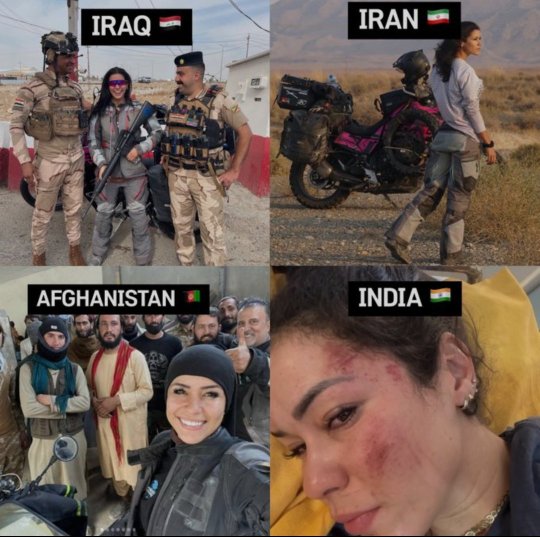
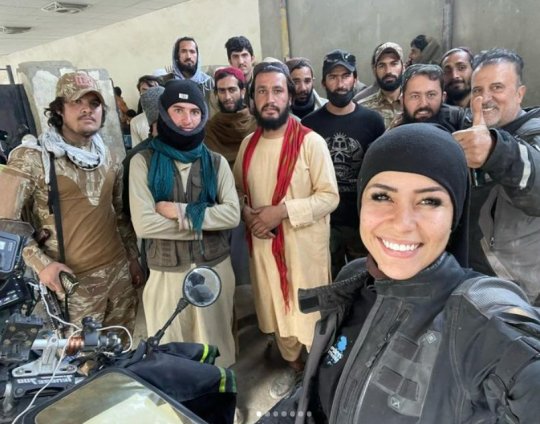

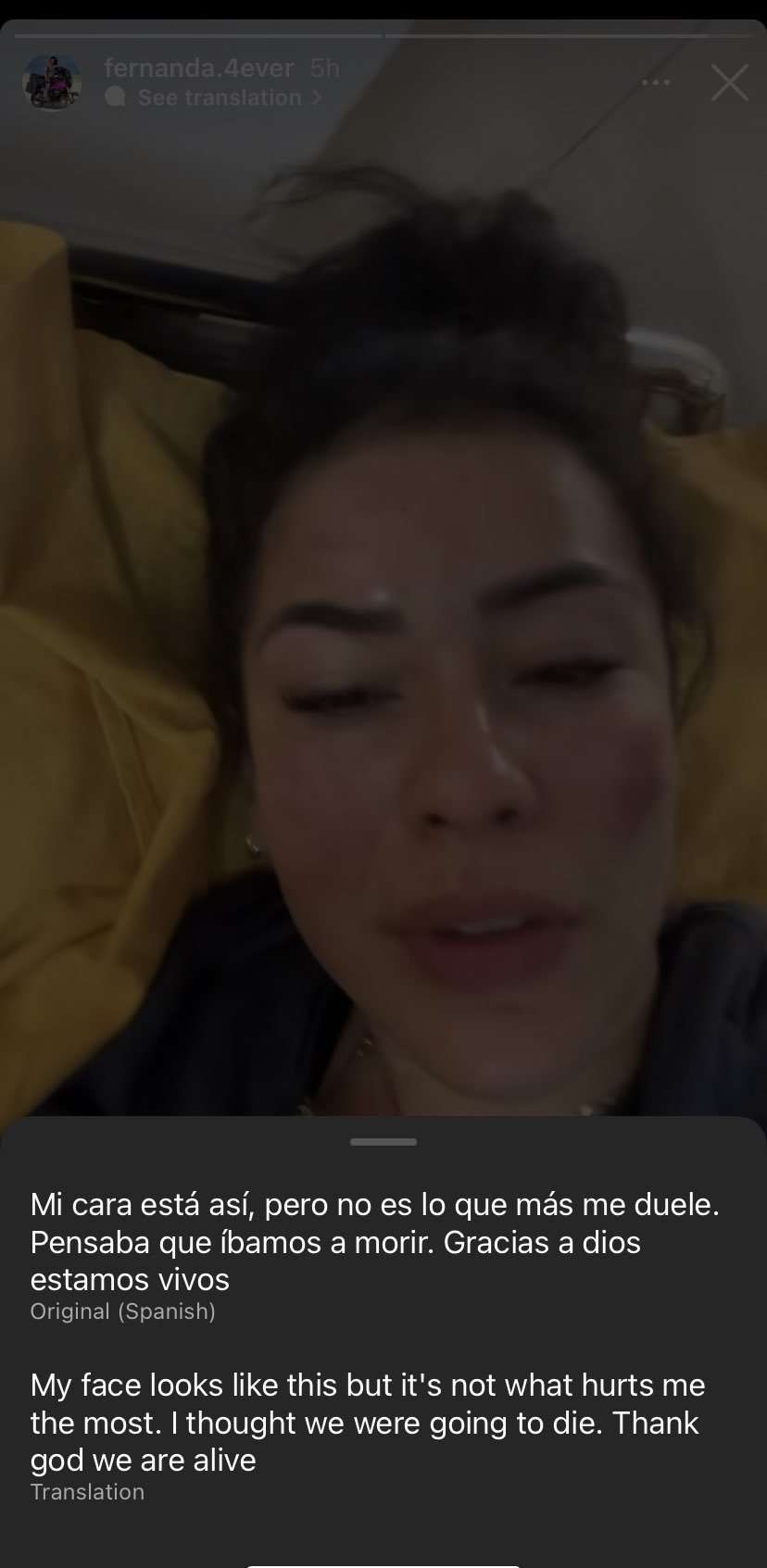
Brazilian women taking a selfie with Taliban.
She traveled 63 countries before reaching India, then she gets gang raped by 7 men in India.
Women aren’t safe there at all.
India has the highest rate of rape on earth.
#photography#islam#islamophobia#brazil#india#indian#mumbai#rape#hinduism#Hindu terrorism#pmmodi#bjp#narendramodi#Hindu extremism#taliban#afghanistan#War on islam#disinformation#double standards#propaganda
8 notes
·
View notes
Text
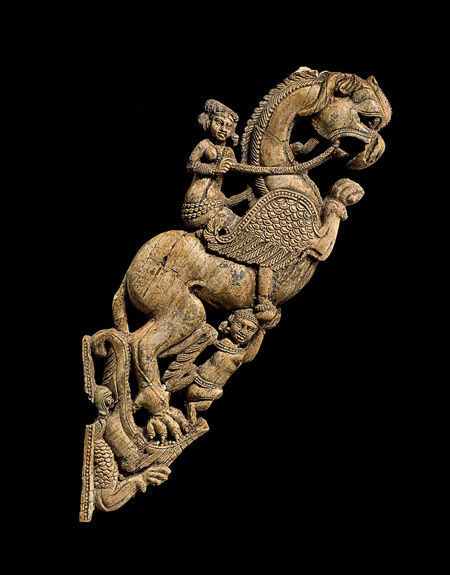

Ivory griffin and rider from Begram 1st-2nd C. CE. I wasn't sure exactly what civilization to attribute this to. The MET says likely "Indian" origin, but parts of India were owned by the Saka-Scythians at the time. This was located in Begram when it was owned by the Kushans. Afghanistan, Begram. Ivory; 11 7/8 in. (30 cm). National Museum of Afghanistan, Kabul, 04.1.116. Photo: © Thierry Ollivier / Musée Guimet.
"Rearing dramatically, the composite creature that forms this bracket has the body of a lion, the wings of an eagle, and the beak of a bird of prey. Known as a sardula in Indian art, this beast may be derived from the griffin of Greek and Roman art. While either tradition could have contributed this powerful animal to the repertory of the Begram ivories, the treatment of the female rider clearly points to India. Artistic traditions from India are also seen in the small figure supporting the front paws of the beast, one of the earth spirits known as yakshas, while the crocodile-like figure with the yawning mouth is the makara, which is symbolic of the powers of water."
-taken from MET Museum
#scythian#indian#kushan#afghanistan#pagan#paganism#antiquities#art#museums#sculpture#statue#ivory#griffin#1st century#2nd century
121 notes
·
View notes
Note
The court is also coming for ICWA
America is literally turning into Afghanistan
For those unaware,
ICWA (Indian Child Welfare Act) prioritizes placing American Indian children in Native — rather than non-Native — homes in cases of neglect, abuse and adoption. There was a reason for that landmark 1978 legislation:
Thanks to the Indian Adoption Project, a federal drive to assimilate American Indians into white culture, as many as 35 percent of Native children were removed from their families. Eighty-five percent of those children were placed in non-Indian homes, a 1976 study found.
There’s a reason why “forcibly transferring children” from one group to another is an international legal definition of genocide. Taking children has been one strategy for terrorizing Native families for centuries, from the mass removal of Native children from their communities into boarding schools to their widespread adoption and fostering out to mostly white families. It’s what led to the passage of the Indian Child Welfare Act (ICWA) of 1978, touchstone legislation that aimed to reverse more than a century of state-sponsored family separation.

x
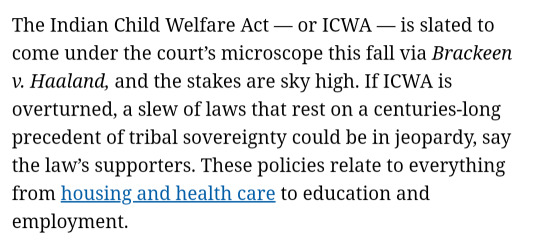
And in case you missed it this goes hand in hand with this:
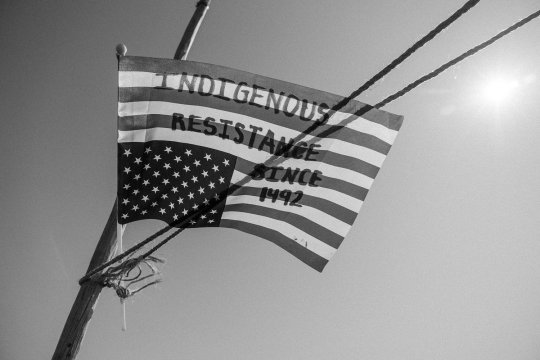
#idk about turning into afghanistan but this is DEFINITELY a slide to fascism#asked#answered#ndn#indigenous#native american#ojibwe#metis#anishinaabe#current events#brackeen v haaland#supreme court#native pride#indian child welfare act#sovreignty#self determination
115 notes
·
View notes
Text

#xitter#twitter x#tweet#rip twitter#twitter post#dark skin#dark skinned#india#bharat#india love#indian#bangladesh#pakistan#kashmir#afghanistan#black lives still matter#black lives are important#black lives movement#black lives have always mattered#black lives matter#black lives fucking matter
6 notes
·
View notes
Text
The Forgotten Hero: How Russia Helped Launch The Decolonial Movement in The Heart of The British Empire
Rafiq Ahmed, Who Founded the Communist Party of India in Tashkent, Gave His Descendants Both a Legacy and a Name, But Hardly Any of Them Know Why They Are Called ’Roosis’
— December 5, 2023 | RT

Rafiq ‘Roosi’ Ahmed died four decades ago, but his visits to the erstwhile Union of Soviet Socialist Republics (USSR) are forgotten, to the extent that his descendants, who continue to be known as the ‘Roosis’ (Hindi/Urdu for Russian national) of Bhopal, are unsure of the origin of the name they carry, and are ignorant of his illustrious legacy.
After battling lung cancer for three years, Comrade ‘Roosi’ died as quietly as he had lived, in the central Indian city of Bhopal at the age of 93, in 1982.
Bhopal had been run by the Nawabs during British rule, from 1818 to 1947, after which it became part of the Indian Union; since then, the socio-political fabric of the city has changed radically. Roosi’s travels to the USSR in 1920, inspired by the great revolutionary upsurge in Russia and Central Asia, have largely been forgotten.
Rafiq Ahmed's ancestral home is a stone’s throw from the picturesque Upper Lake in a typically non-descript narrow bylane in the old quarters of Bhopal, but it is easy to find – thanks to the title, Roosi. Apart from a handful of senior residents of the city, nobody quite knows the origin of this name.
His daughter-in-law Saulat has done a fine job of keeping his belongings safe – especially those pertaining to his trip to the Soviet Union in September-October 1967 to attend the 50th anniversary of the Great October Socialist Revolution – but the family’s collective knowledge is limited to his second trip to Russia, and some anecdotes from his first visit which border on the mythical.

Comrade Rafiq Ahmad, personal archive © RT
They are unaware that Roosi was among the first group of Indian revolutionaries who went to the Soviet Union to seek advice on ousting their British colonial rulers, or that he was among the first to enroll at the Indian Military Training School in Tashkent, or was the founding member of the Communist Party of India in Tashkent, or was tried and jailed for almost a year in the Peshawar Conspiracy Case.
Septuagenarian Khalid Ghani, who knows Bhopal’s history and its people like the back of his hand, attributes this to Roosi’s modest lifestyle. The Ghanis and his family have been neighbors and go back a long way. Ghani’s family used to run a sports shop on the ground floor, and Roosi’s son ran a small hotel called ‘Moonlight’ on the first floor of the same building.
When Ahmed came back from Russia in 1923, people started calling him ‘Roosi’. “He had rubbed shoulders with the top Indian and Russian revolutionaries there, risked his life, and had been jailed. But he didn’t speak about it to anyone, let alone brag about his stay there. Even after the independence of India, he did not list himself as a freedom fighter and avail benefits – such as seeking a plot of land – and secure his future. He just went back to being the person he was before he had left Bhopal. This says a lot about the kind of man he was,” says Ghani.
Modest Background
Roosi hailed from a modest background, and when he returned from Russia, he took a job as the head of the kitchen of the last ruler of Bhopal, Nawab Hameedullah Khan. Much later, when his son Jameel opened his own restaurant, Roosi started assisting him.
Jameel’s wife, Saulat, and his sister, Rafia-un-Nisa, are the two surviving members of the family who spent time with Roosi. Rafia-un-Nisa is in her late eighties and can barely speak. Saulat married into the family in 1969, five decades after Roosi returned from Russia.
Although she is alert and can recall most details about her father-in-law, she is unable to piece together the sequence of events of his life before she married into the family.
“He would be at the hotel during the day and spend the nights writing. I saw him do that for eight years. It is unfortunate that we cannot find most of his writings,” she laments. She pulls out a newspaper clipping to show that Roosi was among the first Indians to write a book on Vladimir Lenin in 1923. However, she has no idea where the book is.

Comrade Rafiq Ahmad (center) meets with youths of the Soviet Union in the city of Kirov. © Sputnik/I. Agranovskiy
Trip to Russia
Roosi’s long period of anonymity ended quite suddenly when Soviet Land magazine published an article on him in around 1966-1967. He was invited to the Soviet embassy in New Delhi and before he knew it, he was on his way to Moscow.
In between, there were mentions of him in the writings of fellow compatriots such as Shaukat Usmani, but they seem to have gone unnoticed.
Ghani recalls, “Nearly five decades after he had returned from Russia, Ahmed was invited to meet the Soviet ambassador in New Delhi. In 1967, he flew to Russia to take part in the 50th anniversary of the Great October Socialist Revolution. Later in 1972, he was acknowledged as a freedom fighter at former prime minister Indira Gandhi’s behest.”
In Moscow, he was awarded a gold medal for his struggle alongside Russian revolutionaries. After receiving the medal, he told Patriot newspaper that the revolutionaries who languished in jail and died there deserved the decoration more than him.
“Twenty of my comrades died fighting there. They were all courageous people…I think they deserved this honor much more than me,” he said, adding that he was held hostage in Kerki (in modern-day Turkmenistan) for over a month along with 36 other Indians, as well as Russian and Turkmen revolutionaries. He spoke about how the British tortured the revolutionaries.
He visited Lenin’s mausoleum and placed a wreath there. He told the newspaper New Age that he had seen Lenin addressing a meeting once, but he could not meet him in person alongside his Indian comrades as he had fallen ill, and this was his greatest misfortune. New Age newspaper then described him as a tall and energetic man.
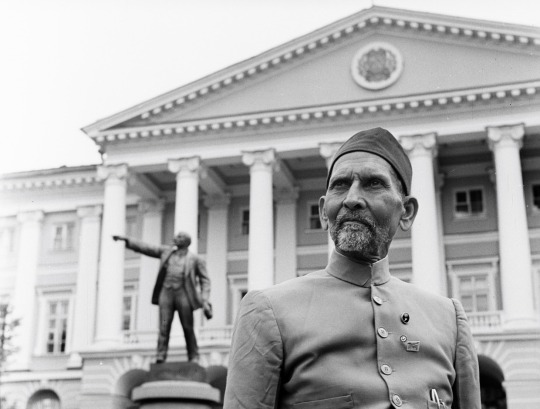
Comrade Rafiq Ahmad with a monument of Vladimir Lenin at Smolny, in Leningrad (N ow St. Petersburg). Ahmad met Lenin in 1921. © Sputnik/Mikhail Ozerskiy
Roosi reunited with other revolutionaries in Moscow; among them was Maria Fortus. She had been his teacher at the Communist University of the Toilers of the East, in Moscow, and remembered all her Indian students by their names. She recognized Roosi and asked him about the other Indian revolutionaries. He also met Avanes Baratov, an old Communist who had participated in the struggle against the counter-revolutionary bands.
Roosi, who was hosted by APN Board (Novosti Press Agency), visited Kerki, where he had fought alongside the Red Army, and Tashkent, where he went to a school where children were taught Urdu. Saulat has a couple of photos of him with Fortus and Baratov, and of his visits to Tashkent and Kerki.
Later that year, he was decorated with another medal by the Soviet Ambassador to New Delhi, N.M. Pegov.
In 1972, he was among the few freedom fighters to be invited to New Delhi by the government of India to celebrate the silver jubilee of India’s Independence.
Roosi’s Journey
A few years after his death, a portion of Roosi’s missing memoir was published in Qazi Wajdi-ul-Hussaini’s book “Barkatullah Bhopali” in 1986.
According to Hussani, when the Khilafat Movement was in full swing in 1920, the Khilafat Committee of Delhi announced a conference and an emotionally charged and rather naïve group of Bhopalis headed for Delhi, believing that this was a call to rid India of the British.
Apart from Roosi, the fiery group included Aftab Ali Khan, Mohammed Ali, Abdul Hayi, Master Mashkoor, Mohammed Khan, Ahmed Kabeer Ahmed, Mohammed Shafi and Mohammed Akhtar.
These revolutionaries stood out among the others when they literally kicked a spy out from their group, and stopped the Imam of Delhi’s Jama Masjid from leading the prayers, as he was said to be close to the British.

Comrade Rafiq Ahmad visiting USSR © RT
However, when they learnt that this was a call to protest against the British stance towards the Turkish Caliphate, a few of Roosi’s companions decided to return to Bhopal. The rest decided to go ahead with the “Hijrat” (Migration), impressed by the enthusiastic call given by Afghanistan’s King Amanullah Khan, and set out for Kabul.
They crossed the border from Peshawar and entered Afghanistan, and headed towards Kabul via Jalalabad. They met King Amanullah Khan, who received them well, but ordered that the refugees be sent to Jabal al-Siraj (a former palace he used as a military base). When the Emir promised to give them jobs, it dawned on the group that he was buying time to strike a deal with the British.
Disappointed, the group escaped from Jabal al-Siraj, covering 30 to 40 miles on foot each day, crossing difficult mountains and treacherous deserts, and reached the Turkistan border, and then finally Termez via Mazar-i-Sharif and Ghor. In Termez, they heard the fiery speech of a Russian commander who said his country had opened its doors to the workers of the world. They met the commander and went to Tashkent with his help.
In ‘The Indian Revolutionaries and the Bolsheviks - their early contacts, 1918-1922’, Arun Coomer Bose writes, “We have it on the authority of Rafiq Ahmed (Roosi) that the first four ‘muhajirs’ (Migrants), including himself, reached Kabul sometime in May 1920. They were well received, and were lodged at Jabal us-Siraz (Jabal al-Siraj), at some distance from Kabul. Others, who came after them, were also brought there, and by the beginning of July there were about a couple of hundred of them at Jabal us-Siraz (Jabal al-Siraj).”
After the founding of the Communist Party of India in Tashkent, it was decided that some of the Indian ‘Muhajirs’ would return to India to establish the foundations of a communist movement there.
Accordingly, towards the end of March 1922, a bigger group of ten, which included Roosi, set out for India via the Pamir route, writes Bose. “At Kharog they divided themselves into small groups and, barring a couple of them, succeeded in reaching Chitral or the tribal territories in the north-west of India. But, almost all of them were apprehended by the Indian police, and were tried in the Peshawar Conspiracy Case,” adds Bose.
Roosi was jailed for nearly a year. A letter issued by the Government of India on December 25, 1972 states that Roosi was arrested in the Peshawar Conspiracy Case (Crown vs Akbar Shah and seven others in the Moscow Tashkent conspiracy case) in the last week of October 1922 and released on May 18, 1923, and that he spent his term in the District Jail in Peshawar.
Saulat’s son now runs the family restaurant, which serves Mughlai cuisine. Her daughter, Bushra, who was eight years old when Roosi passed away, has taken charge of her grandfather’s papers and plans to preserve them.
The next generation of Roosis are unaware of their great-grandfather’s lineage, content with the knowledge that he visited Russia. Can, then, one blame the rest of Bhopal?
— By Lamat R Hasan, an Independent Journalist Based in Delhi
#Feature#Rafiq Ahmed#Rafiq ‘Roosi’ Ahmed#Union of Soviet Socialist Republics (USSR)#Hindi/Urdu for Russian National#Bhopal | India 🇮🇳#Russia 🇷🇺#British 🇬🇧 Empire#“Hijrat” (Migration)#Tashkent | Capital of Uzbekistan 🇺🇿 Now#Peshawar (Now City of Pakistan 🇵🇰)#Kabul | Jalalabad | Afghanistan 🇦🇫#King Amanullah Khan#Indian Revolutionaries & Bolsheviks#Turkistan#Termez | Mazar-i-Sharif | Ghor#Kabul#Muhajirs#Mughlai Cuisine
2 notes
·
View notes
Text
Awareness
Holla!
To all the desi people out there!
It's time to help our Iranian and Afghan brothers and sisters who are fighting against the Islamic Regime and Taliban.
Unfortunately, we cannot donate to help them.
But! We can spread awareness about i, so, please do it.
In your school, university, workplace, social media, you have be their voice.
So, for the sake of humanity please do it.
#desiblr#desi things#human rights#mahsa amini#indian teen#spilled ink#iran revolution#iran#woman's rights#Taliban#Afghanistan
5 notes
·
View notes
Text
Hidden Secrets in Quran ( कुरान में छुपे रहस्य)।।Al Kabir Islamic Exclus...
youtube
#allah#godkabir#santrampaljimaharaj#muslim#muslim india#bb25#big brother#pakistan#afghanistan#nagaland#mizoram#meghalay#tripura#arunachal pradesh#indian#eidmiladunnabi#prophet muhammad#allahuakbar#TheLifeOfProphetMuhammadAllah Kabir#Youtube
3 notes
·
View notes
Text
Made the ultimate South Asian playlist hehehe
#south asia#india#indian#desi#bangladesh#nepal#bhutan#afghanistan#maldives#srilanka#pakistan#languages#langblr#south asian languages#indian languages#Spotify#music#songs#playlist
19 notes
·
View notes
Video
Virat Kohli hits his 71st international century - his 1st in T20I
Asia Cup 2022
9 notes
·
View notes
Text
In what is now Afghanistan one group set up a kingdom called Bactria, which by 150 BCE had conquered parts of the Ganges plain and begun a remarkable fusion of Greek and Indian culture.
"Why the West Rules – For Now: The patterns of history and what they reveal about the future" - Ian Morris
#book quote#why the west rules – for now#ian morris#nonfiction#afghanistan#mutineer#malcontent#kingdom#bactria#ganges plain#ganges#fusion#greek culture#indian culture#greece#india
0 notes
Text
’What Hussain describes can be seen in the National Register of Citizens exercise meant to identify undocumented migrants from Bangladesh. In 2018, a National Register of Citizens was published for Assam. The process of collecting data for this list spanned four years with applicants having to prove that they or their ancestors lived in India before March 24, 1971.
“Muslims faced immense trauma and suffering because of the NRC,” Hussain said. “They were asked to visit Upper Assam from Lower Assam overnight for document verification based on the complaints by the [Assamese] nationalist groups. But, not a single Hindu applicant was asked from Upper Assam to attend the hearing.”
Hussain describes the NRC as an exercise meant to even further dehumanise the Miya community using the stick of citizenship. “The state was in cohort with Assamese nationalists to dehumanise and harass us,” he said. “Citizenship is the mother of all rights. When citizenship is taken, there will be no other rights.”
Hussain fears that the newly implemented Citizenship Amendment Act will create even more problems for Miyas. The act allows non-Muslims from Bangladesh, Pakistan and Afghanistan to apply for Indian citizenship, even if they had entered India illegally.
“With CAA implementation, only Muslims have to prove their citizenship and if there is a small error or mistakes in documents, he may be sent to detention or deported,” he said. “These are dangerous times ahead for Muslims.”’
#bangladesh#refugees welcome#assam#india#muslims#nrc#assamese#hindu#hindutva#miya#caa#pakistan#afghanistan#class war#racism#fascism#nationalisation#nationalism#nazisploitation#nazis#nazigate#nazi#indian#free all oppressed peoples#oppression#oppressor#pedagogy of the oppressed#oppressive#racist#far right
0 notes
Text
The Indian cricket team defeated Afghanistan in the 2nd Super Over
The match between India and Afghanistan looked done and dusted when India dismissed both openers of the Afghanistan cricket team after the 12th over as they defended a target of 213 runs. However, Mohammad Nabi and GulbadinNaib put up a sensational fightback that pegged back the Indians.
Nabi fell for 34 runs off 16, thus ending a 56-run stand between him and Gulbadin that came in just 22 balls. However, Gulbadin carried on as wickets fell at the other end. He ended up being unbeaten on 55 off 23, and Afghanistan tied the scores, thus incredibly pushing the match into a super over.

Both teams ended up scoring 16 runs in the first one, which meant that a second Super Over is now needed to decide the result of the match. India scored 11 runs and lost two wickets in their second Super Over innings, which means Afghanistan needed 12 runs to record their first-ever T20I match win over India. But they ended up scoring just one run and losing their two wickets, which meant that India won the second Super Over.
0 notes
Text
🏏 #T20I Match #LIVE #Today - #INDIAvsAFGHANISTAN !
At The #MChinnaswamyStadium #CricketStadium in #Bangalore, #Karnataka !
@IndianCricketTeam
#INDvsAFG ... #INDIA vs #AFGHANISTAN ~
( #T20 #International #Cricket #Match )
N Cmon #TeamINDIA #Cmon, #Win this 1 too Tonight #Guys n #WhiteWash it!
Heartiest #Wishes,
#AmittARORA
www.AmittARORA.Luxury

#indian cricket team#india#afghanistan cricket#afghanistan#t20i#t20iseries#bangalore#love#respect#amitt arora#amitt#aa
1 note
·
View note
Text

@cricket @cricketcat9
0 notes
Text
Afghanistan closes embassy in New Delhi permanently over ‘persistent challenges’
On Friday, Afghanistan’s embassy in India announced its permanent closure due to what New Delhi called “persistent challenges”.
In September, embassy officials said the problems included a lack of support from New Delhi and claims that the agreements had not been considered since the Taliban took over Afghanistan in 2021. The embassy has been closed since 23 November. A statement on X’s website said the embassy regretted the decision:
“The decision follows the embassy’s earlier cessation of operations on September 30, a move made in the hope that the Indian government stance would favourably change to let the mission operate normally.”
The embassy was pressured by New Delhi and the Taliban regime in Kabul to “relinquish control,” the report said. Diplomats appointed by the previous Afghan government ran the embassy. The Taliban seized power in Kabul in August 2021.
Read more HERE

#world news#world politics#news#india politics#india news#india#indian#new delhi#taliban news#taliban#afghanistan news#afghanistan#the embassy
0 notes